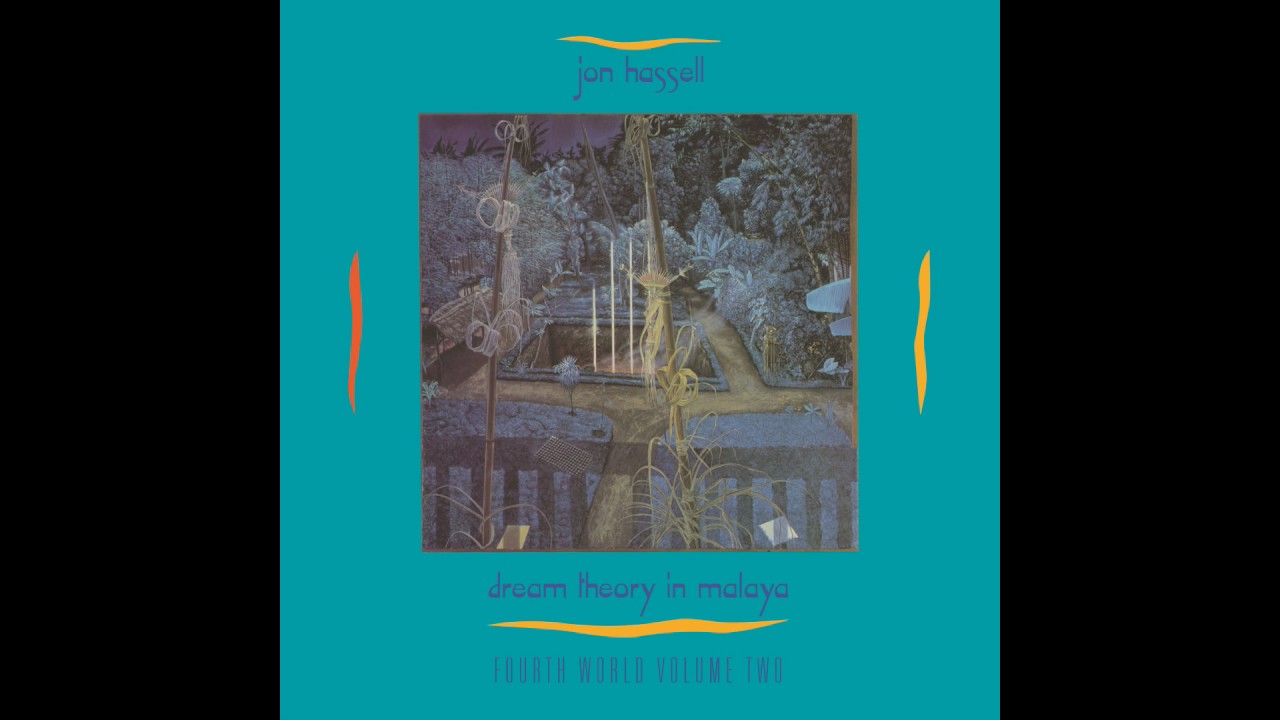First released in 1981, Jon Hassell’s Dream Theory in Malaya (Fourth World Volume Two) has flown well under the radar as something of a forgotten ambient work. Interest in Hassell’s music re-emerged this year with the release on Optimo of tribute compilation Miracle Steps: Music From The Fourth World 1983-2017. Now Dream Theory in Malaya is reissued for the first time, and it arrives accompanied by a prickly backstory that sits oddly alongside the wide open soundscapes and ethnographic delights of the record itself.
Trumpeter Hassell, now 80, made his name collaborating with Peter Gabriel, David Sylvian and Brian Eno. Influenced by minimalist composers including La Monte Young and Terry Riley, his music perched on the cusp between the late-70s collision of ‘exotic’ and minimalist sounds, and the mainstream ‘world music’ surge that led inexorably to Paul Simon’s Graceland. Hassell made Fourth World, Vol. 1: Possible Musics with Brian Eno in 1980, and claims to have invented what he labelled ‘fourth world’ music, only to see Eno commercialise the concept and take the credit. Eno moved on quickly to work with David Byrne on My Life In The Bush of Ghosts, with its extensive use of West African music and samples. Hassell’s linernotes for Dream Theory In Malaya describe Eno as “probably under-credited on this record – maybe a reactionary move on my part to reaffirm an independent identity after the experience of finding Possible Musics – my music – in the "Eno" bin in record stores”. What sounds like a fairly epic sulk has obscured the musical qualities of Dream Theory In Malaya, which fell between the cracks but deserves serious attention.
The title of the opening track ‘Chor Moiré’, roughly translates as ‘shimmering choir’ and is apparently performed by a swarm of insects, whirring and chirruping across the mix and building quickly to a deep, rhythmic counterpoint. Hassell’s trumpet burps somewhere in the distance while off-beat finger-snaps pull the beat away. It is an intense and complex track, and explicitly outside western landscapes and soundscapes. Hassell’s ‘fourth world’ approach was an attempt to create an alternative classical music. As he writes, “What would music be like if ‘classic’ had not been defined as what happened in Central Europe two hundred years ago? What if the world knew Javanese music and Pygmy music and Aborigine music?” However, it is not just a simple case of swapping one system for another. Hassell takes an ethnographic approach, enthusiastically co-opted by Eno, by surveying a cultural landscape, but from halfway across the world, filtered through the wobbling heat of a New York summer.
The title of Dream Theory In Malaya gives the history away, referencing colonial-era Malaya, rather than post-independence Malaysia. Hassell’s starting point was an account by an anthropologist called Kilton Stewart of a 1935 visit to the remote Senai, a Malay ‘dream tribe’ he believed to have powers of psychic communication. From this almost psychedelic text, Hassell creates what he imagines to be a Malay soundscape, populated by insect life, bird calls and jungle drums. The result is a powerfully imagined work that, 35 years on, sits outside its era. It is constructed with innovative use of samples, from bizarre sources. Hassell found the splashing water beat at the base of the central track, ‘Malay’, on recordings from a royal tour of the commonwealth. He added giggling children and birds recorded from the Semelai tribe, who looked close on the map to the Senai. These home-taped fictions, spliced together in a Park Avenue loft, sound like nothing else. ‘Malay’ is full of space, the splashes counterpoint long, languid trumpet lines that wail gently like soft sirens. It is no more authentic than Martin Denny but just as enjoyable. ‘Courage’ is packed with ceremonial trumpets, somewhere in the distance, while in the foreground Brian Eno gives us his ‘quasi-Polynesian drumming’.
In contrast, ‘These Times…’ contains drifts of silence punctuated by the fluttering calls of distant birds, wind chime gongs and an eerie, detuned trumpet solo which found its way, in this case with Hassell’s permission, onto Eno’s Ambient 4: On Land. ‘Gift of Fire’ sounds rather more Chinese, with its recurring gong patterns, apparently because Hassell was thinking of a Chinese girl he had a thing with in New York. Hidden among layers of pseudo-ethnography, personal myth and misdirection is Hassell’s remarkable trumpet playing, which propels Dream Theory in Malaya. He repurposes the instrument, playing it with such dexterity and vision that it barely seems real. It becomes the Malaya of Hassell’s imagination, transforming from insect to bird to unidentifiable noises in the dark, always unfamiliar. Through his use of the trumpet Hassell succeeds in making a new type of music, thoroughly western despite its obsession with the other, but nevertheless new and strange.



